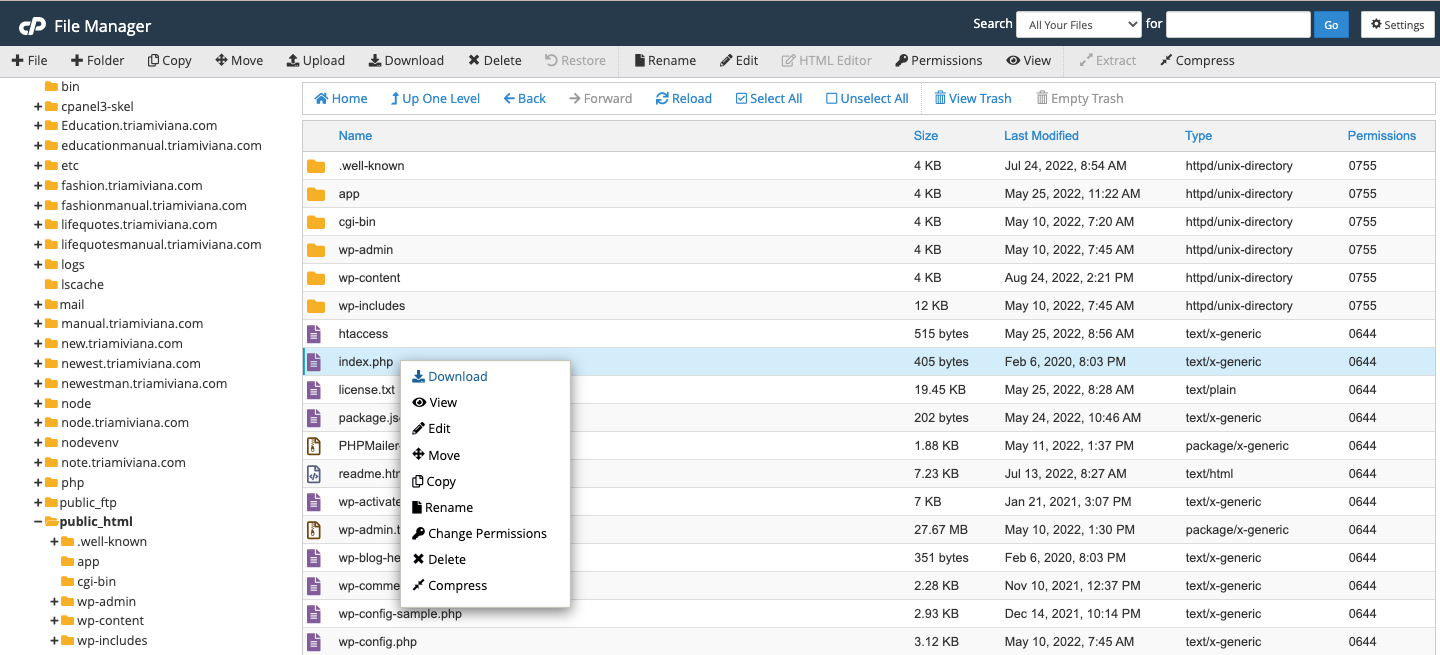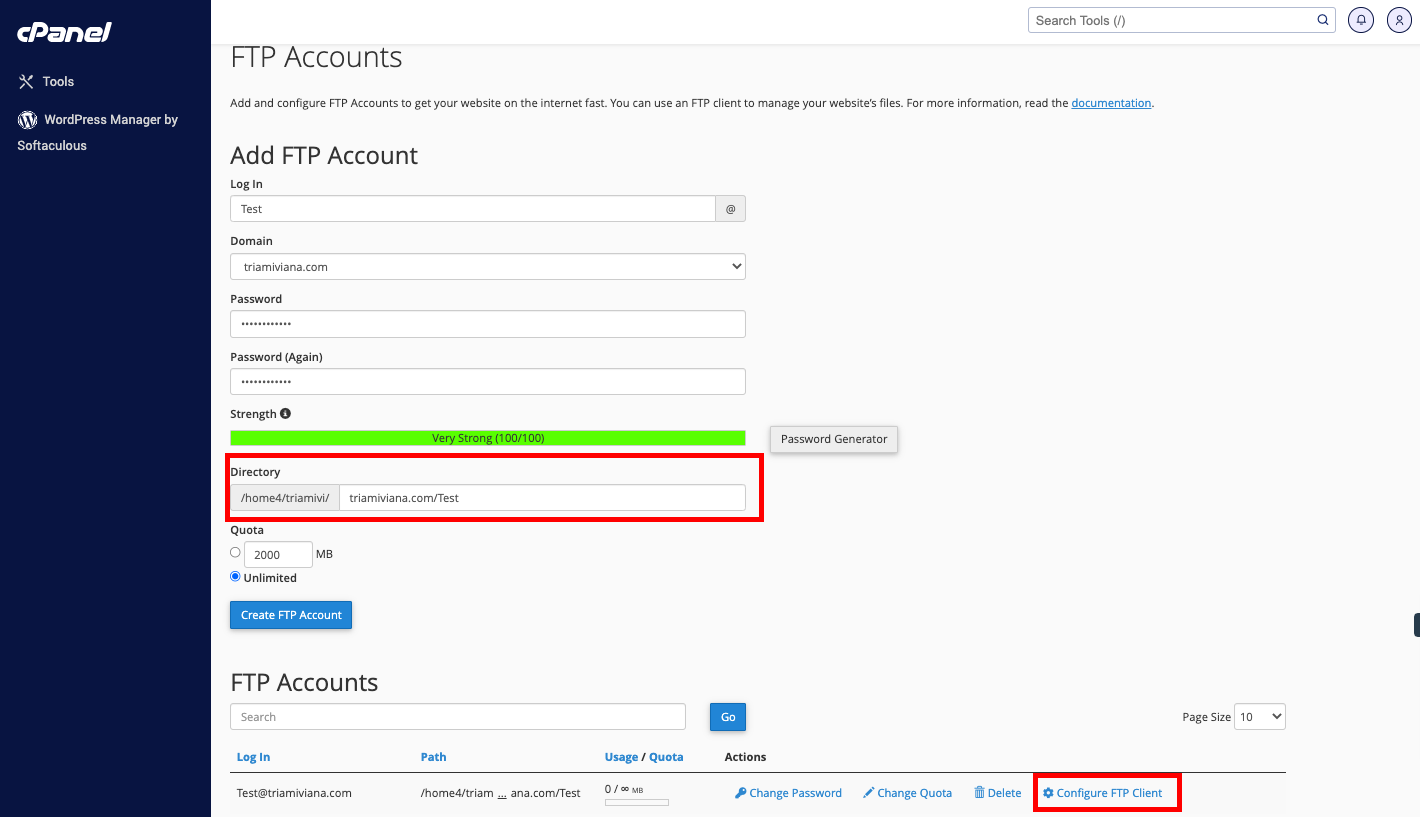4xHost manages a folder structure similar to that of a desktop computer file system. A subfolder called public_html is where the site files are located. If you add additional subdomains and domains to your hosting, they will have their own folders outside the public_html subfolder. This will be the case if you don’t specify a different “Document Root” when adding them to your plan.
When discussing cPanel, there are a few ways to manage your folders and files.
File Manager in cPanel
You can find an online File Manager in cPanel. This file manager is quite similar to a file manager on a computer from a graphical interface perspective. On the cPanel dashboard, you can find a File Manager link. The File Manager is straightforward and easy to use. On the left side of the screen, you will find the browser folders, allowing you to navigate to specific files. You can edit these files online.
Several functions are available to you, including compressing files to .zip, viewing and editing files, changing file permissions, and uploading files. While the File Manager is great for quick operations, we recommend using a protocol for full file management if you need to make numerous or advanced changes.

SFTP and FTP
SFTP (Secure File Transfer Protocol) is a more secure form of file transfer protocol that functions through the SSH protocol.
FTP (File Transfer Protocol) is a method for communication that you can use to connect from a computer (for instance, your desktop computer) to a web server to manipulate files. FileZilla is one of the most popular desktop software applications for FTP.
Both SFTP and FTP use your cPanel username and password. Your domain name can serve as the FTP hostname, with ports 22 (for SFTP) and 21 (for FTP). Under the FTP Accounts section in cPanel, you can also set up additional FTP accounts.

One important thing to remember is that by clicking Configure FTP Client, you can view the settings you need to input into your FTP client. When setting up the directories that your FTP Account has access to, ensure that you set the preferred path correctly. Only home/user/ should be present, and everything else should be deleted if you want to have full account access.
SSH
SSH (Secure Shell) is enabled by default on port 22 with your cPanel username and password if you’re an advanced user. SSH is a way to connect to your web space using the command line. For power users, this is an essential feature, as it allows you to run commands and manage files effectively.
To use SSH, you need an SSH client to connect to the server. Within a terminal application, you can run commands manually once you are fully connected to the server with the SSH client.
